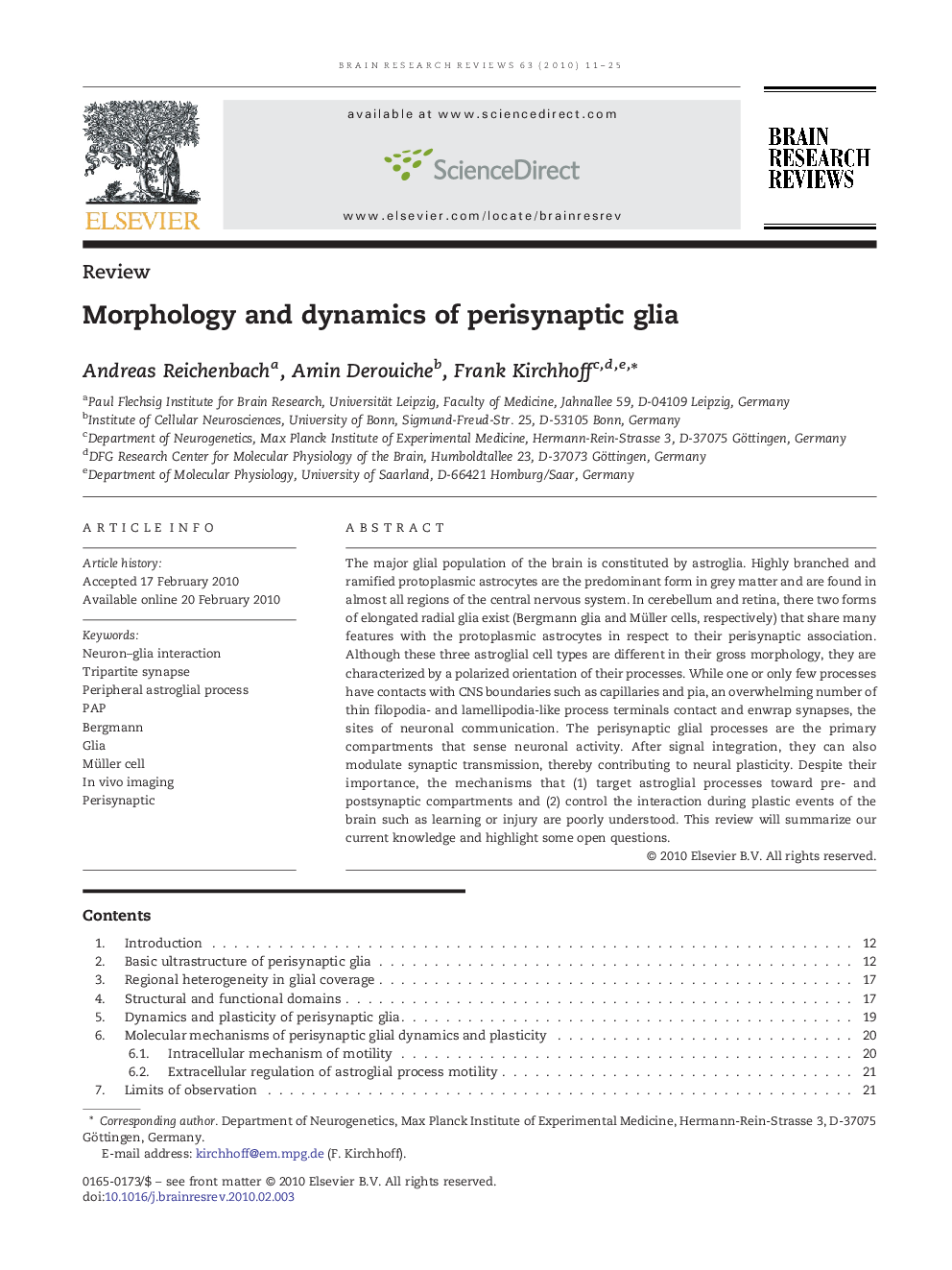| کد مقاله | کد نشریه | سال انتشار | مقاله انگلیسی | نسخه تمام متن |
|---|---|---|---|---|
| 4333645 | 1614473 | 2010 | 15 صفحه PDF | دانلود رایگان |

The major glial population of the brain is constituted by astroglia. Highly branched and ramified protoplasmic astrocytes are the predominant form in grey matter and are found in almost all regions of the central nervous system. In cerebellum and retina, there two forms of elongated radial glia exist (Bergmann glia and Müller cells, respectively) that share many features with the protoplasmic astrocytes in respect to their perisynaptic association. Although these three astroglial cell types are different in their gross morphology, they are characterized by a polarized orientation of their processes. While one or only few processes have contacts with CNS boundaries such as capillaries and pia, an overwhelming number of thin filopodia- and lamellipodia-like process terminals contact and enwrap synapses, the sites of neuronal communication. The perisynaptic glial processes are the primary compartments that sense neuronal activity. After signal integration, they can also modulate synaptic transmission, thereby contributing to neural plasticity. Despite their importance, the mechanisms that (1) target astroglial processes toward pre- and postsynaptic compartments and (2) control the interaction during plastic events of the brain such as learning or injury are poorly understood. This review will summarize our current knowledge and highlight some open questions.
Journal: Brain Research Reviews - Volume 63, Issues 1–2, May 2010, Pages 11–25